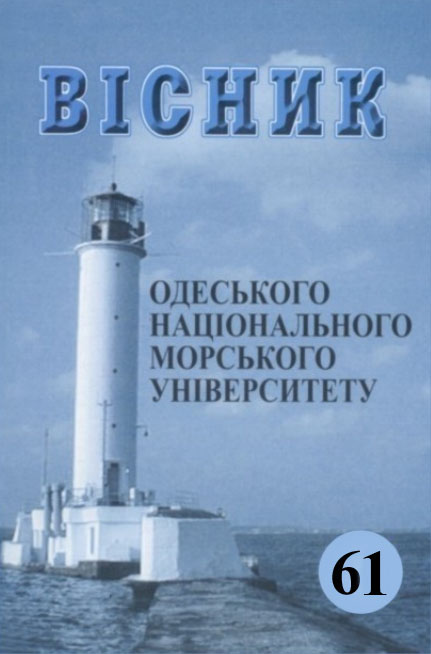Comprehensive assessment of operating modes of the exhaust gas recirculation system for marine diesel engines
Main Article Content
Abstract
The analysis of the requirements of MARPOL Annex IV regar-ding the emission of nitrogen oxides with exhaust gases of marine diesel engines is carried out. The range of possible values of the concentration of nitrogen oxides in the exhaust gases of marine diesel engines is indicated, depending on the year of their construction. The mechanism of the formation of nitrogen oxides during fuel combustion is described. The review of primary (Exhaust Gas Recirculation systems, humidification of boost air, the use of water-fuel emulsions, the use of direct injection of water into the diesel cylinder, modernization of the design of fuel equipment) and secondary (selective and non-selective reduction of nitrogen oxides to elementary nitrogen) methods for reducing the emission of nitrogen oxides in the exhaust gases. The exhaust gas recirculation system for marine diesel engine 7S60МC by Kawasaki MAN-B&W is considered. The scheme of its configuration with basic equipment, as well as the mechanism for ensuring the required degree of exhaust gas recirculation, is outlined. For loads of marine diesel engine 7S60МC by Kawasaki MAN-B&W 25,8, 50,7, 75,6, 100,7 % in the range of exhaust gas recirculation 0-21 %, the change in the concentration of nitrogen oxides in exhaust gases, as well as power, specific effective fuel consumption and temperature of exhaust gases was studied. It has been established that the use of an exhaust gas recirculation system helps to reduce nitrogen oxide emissions to 35,95 %; and also leads to an increase in specific effective fuel consumption (by 3,37 %), a decrease in effective power (by 2,7 %), and an increase in the temperature of exhaust gases. A diagram has been developed to evaluate the complex effect of the exhaust gas recirculation system on the environmental, economic, and energy performance of a marine diesel engine, as well as its thermal stress. It was established that the selection of the operating mode of the exhaust gas recirculation system (as a way of ensuring the requirements of the MARPOL Annex VI) should be based on a comprehensive assessment of the following diesel engine performance indicators: nitrogen oxide emissions, specific effective fuel consumption, effective diesel power, exhaust gas temperature, as well as the area of operation of the marine vessel and the operation of the marine power plant.
Article Details
References
2. Sagin S.V., Kuropyatnyk О.А. (2018) The Use of Exhaust Gas Recirculation for Ensuring the Environmental Performance of Marine Diesel Engines. OUR SEA: International Journal of Maritime Science & Technology, vol. 65, no 2, pp. 78-86. DOI.org/ 10.17818/NM/ 2018/2.3.
3. Kuropyatnyk O.A., Sagin S.V. (2019) Exhaust Gas Recirculation as a Major Technique Designed to Reduce NOх Emissions from Marine Diesel Engines. OUR SEA: International Journal of Maritime Science & Technology, vol. 66, no. 1, pp. 1-9. DOI.org/ 10.17818/ NM/2019/1.1.
4. Sagin S.V., Kuropyatnyk О.А. (2017) Application of the system of recirculation of exhaust gases for the reduction of the concentration of nitric oxides in the exhaust gases of the ship diesels. American Scientific Journal, no. 15, iss. 2, pp. 67-71.
5. Kuropyatnyk O.A. (2018) Reduction of NOx emission in the exhaust gases of low-speed marine diesel engines. Austrian Journal of Technical and Natural Sciences, no. 7-8, pp. 37-42. DOI.org/ 10.29013/AJT-18-7.8-37-42
6. Sagin S.V., Solodovnikov V.G. (2017) Estimation of Operational Properties of Lubricant Coolant Liquids by Optical Methods. International Journal of Applied Engineering Research, vol. 12, no. 19, pp. 8380-8391.
